


8 min
This blog outlines how to take your classroom learning outside and what the benefits are for both you and your students.
Teachers are being encouraged to teach outside as much as possible. While this is a great idea in theory it can leave some of us feeling a little confused about how exactly to do that. This blog has some great tips, lesson ideas and Twinkl resources which all work well for teaching outside the classroom.
What are the benefits of teaching outside?
Connecting with nature and spending time outside has benefits for everyone. It can help build resilience against stress, improve concentration and creativity, increase self-discipline and self-esteem and help foster a love of nature and the natural world. Regardless of the pandemic situation in New Zealand, there are many reasons to transfer as much of your learning as possible outdoors.
What do I need to teach outside effectively?
The most important thing you need to teach outside effectively is clear guidelines. Spend some time chatting with your class about what your expectations are and let them come up with ideas for minimising the distractions. Clearly defined areas for where they can be physically are a must, often there are already great natural boundaries, but some cones may be helpful for this. If you are spending a lot of time outside it can be quite hard on your voice, so make sure you set up a very clear (loud) attention grabber with your students and practice it, so they know when they hear it to come to you and stop talking. A whistle, handbell or percussion instrument could be handy for this. And don’t forget sunhats, sunscreen, water bottles and shade!
Start off simple
Some lessons naturally lend themselves to learning outside more than others. It’s a good idea to start with these types of lessons while you and your students are getting used to being outside. Heading outside for silent reading is a great place to start. This activity is appropriate for all ages, you can repeat it/practice it every day (weather permitting), the guidelines can be quite simple as you won’t need to be addressing the whole class regularly throughout the session.
Heading outdoors for PE/Fitness is another easy way to get your students learning outside. Again, setting up clear physical boundaries and using a loud attention grabber (like a whistle) lend themselves very well to PE lessons, so you can start to establish these ground rules in a very natural and purposeful way. Once you and your students are comfortable silent reading and learning PE outside you can start to experiment with different curriculum areas. Here are some ideas for you.
Literacy
There are so many fun and engaging ideas for writing motivation outdoors. Using this Five Senses Field Walk Worksheet helps your students focus on the environment around them and could be perfect for motivating some poetic writing.
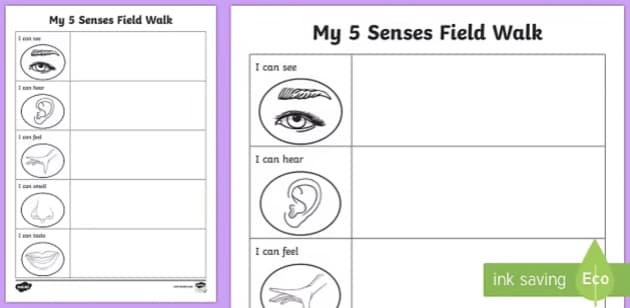
Five Senses Field Walk Worksheet
Your students could write procedures for how to use different pieces of playground equipment or how to play different kinds of outdoor games. Younger students might enjoy creating an Alien Food Recipe and could find all their ingredients outside and maybe create their food in the sandpit.
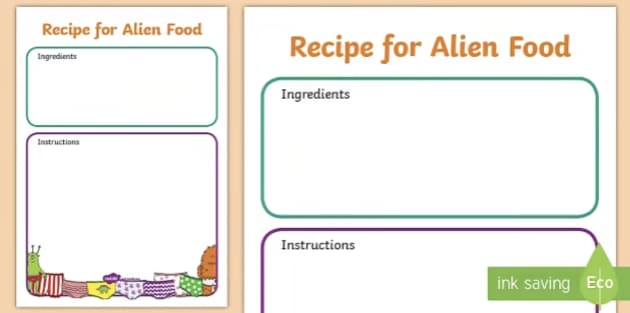
Once your students have completed the physical component of this style of learning they will need to find a quiet spot to focus on completing their piece of writing. If you have lunch tables set up outside this could work well, some of your students may be happy lying on their tummies on the grass, while others may prefer to stand up and use the wall as a desk. Let them experiment with some different ways until you all find a solution you’re happy with. If you have a stash of clipboards somewhere in your school they also may come in handy here.
Numeracy Activities
Statistics is a popular maths topic in Term 1 so get your students outside and gathering information on this Tally Chart and Graph Template. They could look at the most popular plants in the school garden, most common birds seen around school, different coloured cars driving past, the choices are endless. First they complete the tally chart and then colour the graph to see the trends.

Tally Chart and Graph Template
Numeracy activities that your students use materials for work really well outside. Students can spend the beginning of the session finding ten or twenty pieces of bark, pebbles, acorns, twigs etc that they can manipulate for the maths session. Using chalk on a concrete surface can work well if you are recording addition or subtraction problems.
Combine maths and art with a symmetry activity. Using a variety of natural materials, students could create a symmetrical pattern to photograph or find items that have lines of symmetry in themselves. Analyse the photographs together back inside the classroom.
With each student armed with a ruler, provide the class with an exact measurement, such as 23cm. Their challenge is to find an object that measures that exact length. The Estimating Length Worksheet could also be adapted for outdoor use. Before leaving the classroom, give students a list of items to measure (i.e longest blade of grass).
For older students this SunSmart Schools - UV Investigation involves your class checking the UV level in half hour increments throughout the day and recording it on their data collection sheets. The data is collected again after a month and compared. Students can compare their data with each other or another class to get an even clearer picture of what is happening to the UV rating throughout the day and over the month. This is not only great statistics learning but also will hopefully encourage them to be Sun Smart in the playground!
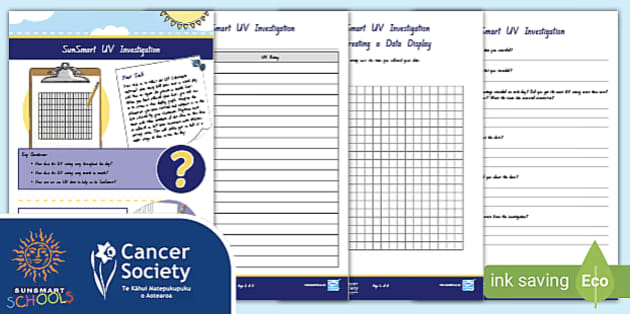
SunSmart Schools - UV Investigation
Other ideas
If you use play based learning in your classroom make sure you set up some stations (or have all your stations) outside. Water play, sand play, paintbrushes and water on the concrete, chalk drawings, obstacle courses, balls, hoops and skipping ropes, a box full of books and some big cushions, there are so many options.
Try a facts hunt like this one for ANZAC day. Simply cut up and hide the facts around the school (use stones to weigh them down in case the wind gets up!) The students hunt for the facts to answer the questions on their answer sheet. Fun and engaging.
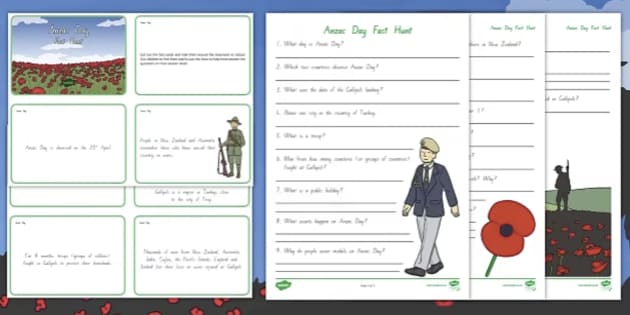
Practice gross motor skills with the Outdoor Classroom Day Gross Motor Skills Challenge Cards. These cards can be used as part of movement or physical education time, as a brain break or learning through play.
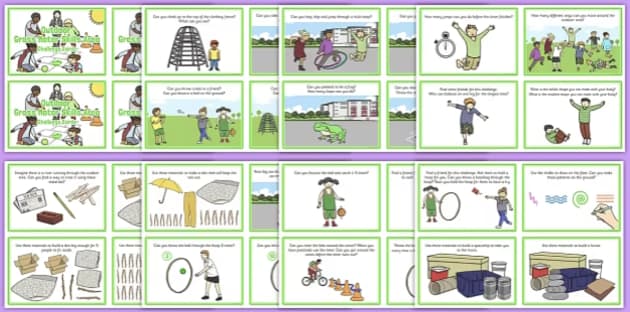
Outdoor Classroom Day Gross Motor Skills Challenge Cards
Make leaf prints or leaf rubbings using fallen leaves. Simply collect the leaves and then put them under a piece of paper. By rubbing a crayon on top of the paper, the print of the leaf will begin to appear.
Get planting! If you have a little bit more time and budget for planning, students could bring in a yoghurt container and plant their own bean seeds. There are lots of planting and growing resources on Twinkl to support this activity.
Teaching outdoors has many benefits for both you and your students. Once you have set it up with your class the possibilities are endless. So much of it is down to trial and error and what works well in one class may not work for others. Just have fun trying this out with your students and finding out what works best for you.
We’d love to hear your thoughts on this post, so if there’s anything you’d like to add or ask, or if you even want to share it, please use the links below.
At Twinkl, we have a wide range of resources to support your teaching in addition to the ones mentioned in this post.
Our downloadable materials are eco-friendly to print and come in an array of options, including editable, so you can tailor-make them specifically for your class.
Subscribing to our website will release an invaluable amount of teaching resources, so why not look at our packages for individuals and educational providers and choose one that’s right for you?
